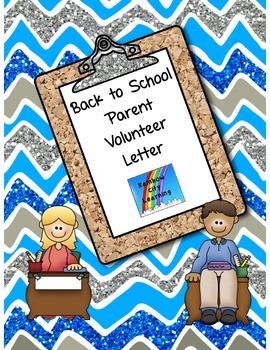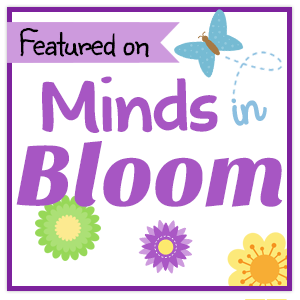"If they had better kids, they'd send 'em!" This is a quote that has really stuck with me for many years in education. I learned to appreciate the impact of those words when I became a parent and later on, a grandparent. I wish I could recall the name of the speaker so I could let him know what an impact his words have had.
Like you, I've had my share of "challenging" groups along with some class groupings that were truly made to order for a teacher's dream of the perfect class. But here's a secret. Ask anyone who has been through my classroom if they were part of the best group of kids ever, and they'll tell you without hesitation that they were. The lineup of past behaviors and mistakes should not impact the great year you are embarking on right now, with the class of your dreams. If they are not currently the class of your dreams, I hope some of these suggestions will help you to make your dream class come true.
Tip #1: Show you care.
Every child in that new classroom of yours is (or should be) deeply loved by someone. Those who aren't getting the love and care they deserve at home will soon show you what they
need (usually by acting out). You will need to show them even more love at first, and maybe throughout the year.
Asking the families of your students to share what they already know about the new students you will be receiving will form the basis for a long and successful partnership. Students, families, and you will all be winners. Try my free Parent Partnership letter below, or write your own. Then study the responses carefully. Each one should be a blueprint on how to reach and meet the needs of that student every day. I liked keeping mine in a binder to refer back to all year long.
Use the information you're gathering to find ways to show each student that you are genuinely interested in him or her as a person, not just as a student. You might just find a few lifelong friendships in this way to enrich the rest of your days!
Tip#2: Build a strong learning community.
Start team-building activities on the first day and continue them throughout the year. I loved operating my classroom like a little city, with the students gradually taking charge. Kids who feel invested in the outcomes of your classroom will not be behavior problems. It would be counter-productive to their beliefs: beliefs you have instilled from Day 1.
My classroom city had a government, mission statement, jobs that were real and necessary, and a clear identity forged with logo t-shirts, a city seal, a flag and pledge, and standards for meetings and general operation of the classroom. If someone broke a rule, it wasn't "my" rule that was broken, it was "ours", and we needed to deal with it together. We did.
You may find these resources useful as you develop your own classroom community:



Tip #3: Encourage collaboration.
Whenever possible, encourage students to work together. I love to see students working side by side, supporting and encouraging each other in STEM/STEAM activities, science labs, math problem-solving, and book club discussions. There are many ways to select groupings, including student choice once in a while. I have a blog post about how to make collaborative groups work
here.
Some great opportunities for collaboration can be found in these resources:
Tip #4: Develop positive life habits together.
This short year that you have with these students is your opportunity to help them on the road to developing skills and habits that will serve them for a lifetime. Think about the things that enrich your life and feed your soul. What are they, and how can you share those parts of yourself with your students? Think of ways that you can integrate some of these habits into your daily classroom practices. You'll be creating a classroom environment that is pleasant and fulfilling to you and nurturing for your students. Win-win!
Here are mine:
Yoga and meditation
Build in quiet times during the course of your day. Practice yoga with your class if you are comfortable with that, or just have a few moments for quiet reflection at the start or end of each transition.
Journaling
Whether you have daily journal writing or not, you can keep a journal together as a class. Try writing some thoughts about what your class is learning at the beginning or end of each day. You might also add in a little reflection time after an Interactive
Notebook lesson. Set a good example by writing in your own journal as your students are writing. I promise that you won't have to be the "talking police" or "behavior enforcer" if journaling becomes a norm in your community and all agree that it is valued.
Music
Weave music throughout your day. I love to use it for transitions, but there are so many other ways music can be a big motivator for learning. Think of how you use it in your life. Do you have certain songs that you play when you are working around the house, gardening, writing lesson plans and grading papers, or just relaxing by the fire? Try to use music in the same ways with your students. Develop a "sound track" of your life in class together. During my last year in the classroom, we fell in love with the songs of
I Am Bullyproof Music and found so many ways that the lyrics applied to our lessons, especially in Language Arts and Social Skills. With the help of my students, we developed
unit plans to accompany our favorite Bullyproof songs.
Oh, and sometimes, we loved a little "Old Time Rock n Roll" by Bob Seger if we just needed to shake it all off! Find what works in the community you are growing. Music will make it a happy place.
Art
Art is my passion. Not all kids love to draw, but most will decorate and embellish if given the opportunity and cool art materials to work with. I loved using colorful markers, oil crayons, colored pencils, glitter pens, and dabs of glitter as I worked on my lesson example pages for interactive notebooks. Kids were inspired to do the same on theirs. Wherever possible, I loved to add a craftivity or a piece of artwork to our lesson responses. I know you'll find ways to make it fit if you're an art lover, too!
Some resources you might like to browse as you think of ways to start building those positive life habits:
Tip #5: Celebrate success.
Decide what success
means to you and to your students. When it is achieved, have an established way of celebrating ready. Every celebration does not have to be a big
party with snacks. The idea is to move them ever closer to appreciating the intrinsic rewards for a job well done and celebrating successes within. I liked rewarding
great test scores with classroom money, but often a high five or applause is just right. A mention in the class newsletter is another great way to celebrate. And sometimes a silent cheer and a self-pat on the back.
For a super end of year celebration, try my free Rock Star Student Awards!
For more tips on how to have the well-behaved classroom of your dreams, check out these great posts:


























































